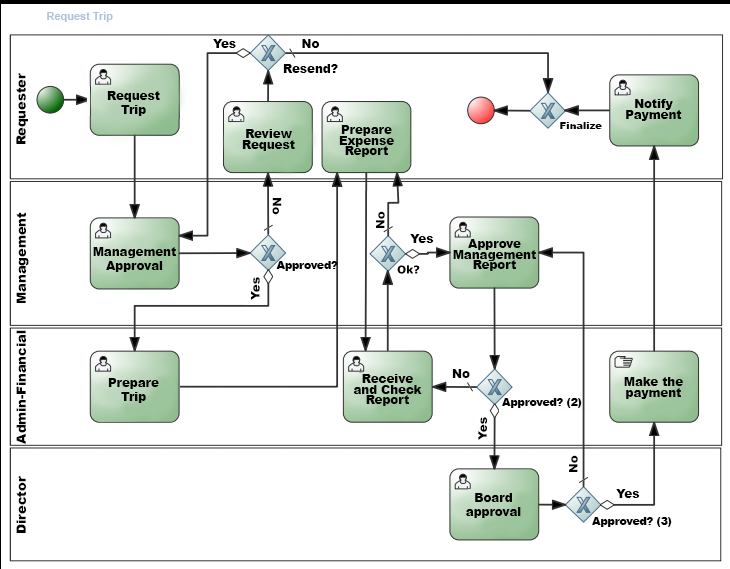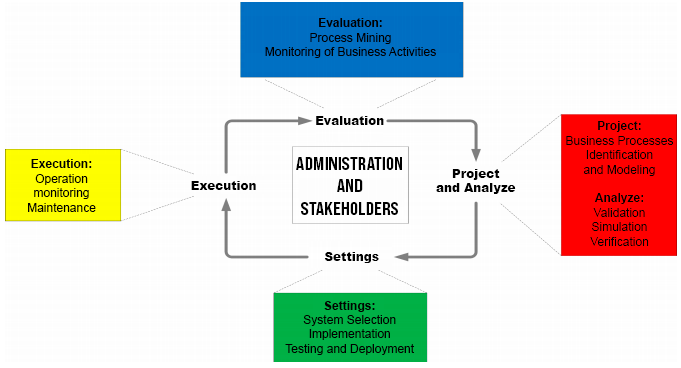Process management in the Education Sector is a key factor for the organization of state, municipal, and federal institutions. A setup based on process management encompasses several factors, which constitute pillars within an institution: pedagogical management, administrative management, and human resources management.
As far as pedagogical management is concerned, it’s nothing short of primordial within the educational sector management, because it’s the raw material that drives business activities. This kind of management refers to how a company will plan and execute its various teaching activities such as: teaching staff organization, implementation of the teaching methodology, teacher-student interaction, work delivery management, evaluation, and performance management, among others.
Administrative management is what permeates the health of the business in relation to the management of the institution’s resources. These resources relate to the human, physical, and financial resource tasks of the organizations. Human resources encompass all the people who perform a particular work activity.
These people in their function assignments are responsible for managing all kinds of communication, with regard to the activities performed in a given educational sector. Physical resources refer to the assets of the institutions, and financial resources are the assets responsible for maintaining the financial health of the business.
Educational Management Techniques
Managing educational processes, given the various activities that make up this branch of business, is a complex task. There are techniques and tools, however, that can help institutions to computerize their processes and better administrate them. The AS-IS, TO-BE technique, along with BPMN (Business Process Model and Notation) modeling, is widely used to perform processes mapping and automation, and it’s worth it for the sector.
1. AS-IS/TO-BE
Through AS-IS it’s possible to obtain an understanding of how the process is currently performed within the educational organization. From this understanding, we can use the TO-BE concept to propose process improvements in order to simplify and debureaucratize the actions of the stakeholders involved in the execution of their activities. Check out Five steps for process mapping (AS IS).
2. BPMN
After this AS-IS, TO-BE survey to propose process improvements, it is possible to use BPMN modeling to refine the study. BPMN is used to understand how the business works, as well as to divide the activities, roles, and responsibilities of those who will execute a given process. This allows a broad view of the entire organizational management functioning, aiming at mapping and simplifying the steps performed in the management process.
There are some processes that can be automated and improved with the use of BPMN, for example, educational processes, purchasing processes, legal processes, sales processes, and quality processes, among others.
Tools for Educational Management
In the market there are customizable tools that can assist in the management of educational processes, such as, for example, the Fusion Platform. This tool allows the automation of processes through the web platform and mobile application. The Fusion platform has several features that allow the realization of educational management such as: BPM studio modeling of processes; monitoring of tasks and process management in a simple and organized way; creation of electronic forms; integration of forms with other applications; social resources; EDM (electronic document management).
The importance of the GED
The relevance of EDM for educational sectors and in general: The electronic document management stands out for the digital organization of documents, i.e., replacing the traditional notepad with digital documentation. This digital documentation also has versioning, and approval features that facilitate management, as well as increased security in information storage, including for audit purposes.
Fusion allows the computerization of the educational processes management, aiming to simplify the processes that are performed within the institutions, as well as to map all performed processes, improve the quality of the educational services, reduce costs in operations, generate process history, manage documents electronically, improve the planning of the areas involved, debureaucratize the processes, create a macro view of all processes performed, identify points for improvement, and improve the efficiency of the processes by reducing costs in relation to time and money. Read more: How to implement an EDM system in your company?
Importance of Educational Management
Process management in the education sector is important for the organization of the institutions, so that quality education services are offered to the population, as well as providing a healthy environment for professionals to perform their activities with quality and agility.
Not familiar with the Fusion Platform yet? Try it free for 15 days.




